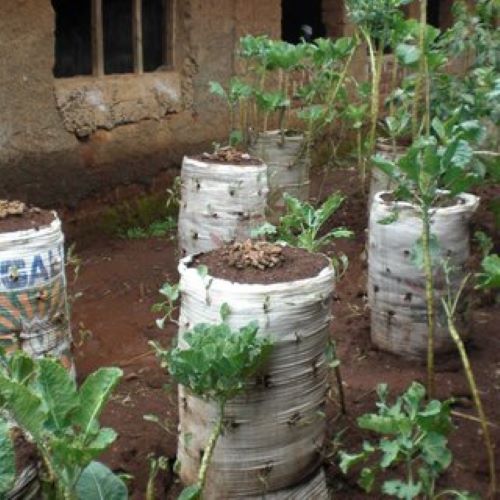“Sack gardens” are one way to do it.
Putting together a sack garden involves filling a burlap sack with soil and other nutrient-rich organic material, cutting incisions in the sack and planting seedlings in the soil. It is a very efficient use of space and water. It is also organic and sustainable. Weeds and pests are virtually non-existent, eliminating the need for fertilizers and pesticides—and their costs.
Sack gardens are very productive. Families in Kenya that plant them harvest enough produce for their own needs. There is often surplus that can be sold to neighbors, increasing family incomes and community food security. Because sack gardens do not require fertilizers and pesticides, profit margins are higher. This enables families to invest in additional sack gardens and other innovations to increase output and income.
Please contact me to learn more. We can set up a time for you to speak with World Neighbors, which teaches farmers to use sack gardens and other simple low-water innovations in Kenya, Tanzania and other countries.
By Kate Schecter, CEO, World Neighbors“








